-main1.jpg)
In Sanatan Dharma, Bhagwan Vishnu, the Preserver among the Holy Trinity (Brahma, Vishnu, and Shiva), incarnates from era to era to protect the righteous, destroy evil, and re-establish dharma. These divine descents, known as the Dashavatar—the ten avatars—are not random manifestations, but carefully ordained appearances aligned with the cosmic need of each era. The Dashavatar appear in the following order Matsya, Kurma, Varaha, Narsimha, Vaman, Parshuram, Sri Ram, Krishna, Buddha/Balram & Kalki. They are recounted in the Puranas, especially the Bhagavata Purana, Vishnu Purana, and others, and form a sacred framework that explains both divine justice and the cyclical rhythm of time (yuga dharma). Each avatar is unique in its form, mission, and spiritual symbolism, offering lessons in humility, courage and righteousness.
About Bhagwan Vishnu
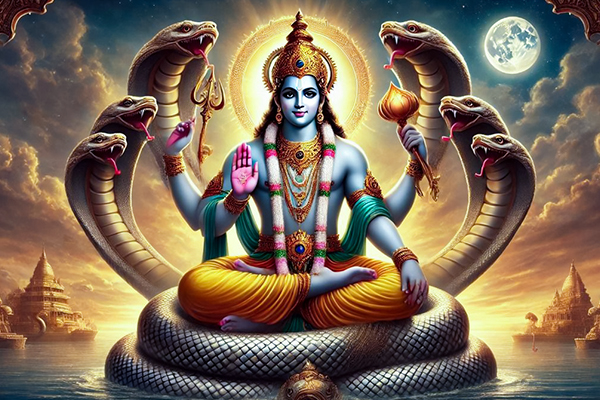
Bhagwan Vishnu, one of the most revered deities in Hinduism, and is the eternal Preserver in the Divine Trinity (Trimurti), alongside Bhagwan Brahma, the Creator, and Bhagwan Shiva, the Destroyer. His sacred role is to sustain the universe, uphold dharma, and restore cosmic balance whenever it is disturbed. Through boundless compassion and divine intervention, He ensures the triumph of righteousness over evil.
Scriptures portray Him as timeless, all-pervading, and radiant with divine serenity. His blue complexion signifies the infinite cosmos, and His four arms bear sacred emblems—the conch (primordial sound), discus (cosmic justice), mace (power), and lotus (purity and transcendence). Always at His side is Lakshmi Devi, His eternal consort, symbolizing prosperity and divine grace, inseparable from His preserving nature. He is depicted reclining on Sheshanaga, the cosmic serpent, floating upon the Ocean of Milk—a symbol of His mastery over time and illusion. His celestial mount, Garuda, represents swift protection and unwavering devotion, carrying Him across realms to defend virtue.
His most celebrated role is seen in His ten divine avatars (Dashavatara), where He descends to Earth to restore dharma, with prominent incarnations like Shri Rama and Shri Krishna embodying ideal kingship and divine guidance.
Significance of Dashvatar
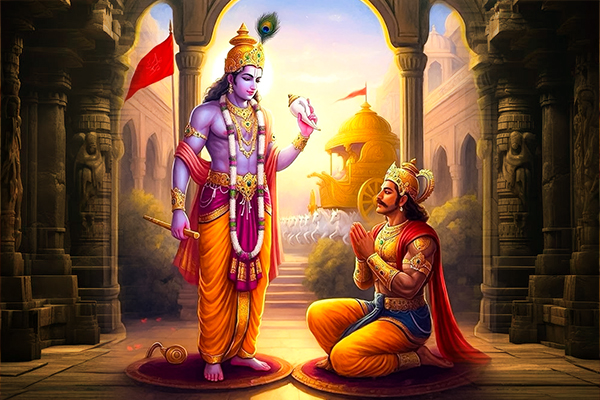
The Dashavatars, or the ten principal incarnations of Bhagwan Vishnu, signify divine interventions taken by the Supreme Being to restore dharma (righteousness), destroy adharma (unrighteousness), and guide humanity through various epochs of time. These incarnations are described in various Puranas, especially the Bhagavata Purana, Vishnu Purana, and others. Each avatar appears in a different form suited to the needs of the age (yuga) and the condition of the world.
Bhagavad Gita - Chapter 4- Verses 7 and 8
Yada Yada Hi Dharmasya
Glanir Bhavati Bharata
Abhyutthanam Adharmasya
Tadatmanam Srjamy Aham
Paritranaya Sadhunam
Vinashaya cha Duskrtam
Dharma-Samsthapanarthaya
Sambhavami Yuge Yuge
These are words spoken by Bhagwan Sri Krishna to Arjuna, in the Epic Mahabharata, during the battle of Kurukshetra. Translated in English, this Shloka means: Whenever there are discrepancies in religion and the good is threatened, O son of Bharata (addressing Arjuna), I will manifest on Earth for the deliverance of the religious, pious devotees and to restore the principles of Dharma in every millennium (Yuga).
The great Bhagwan Vishnu has come to Earth every time, in all Yugas, in a particular form or Avatar to destroy evil and bring back the balance and restore dharma. It is believed that every time evil threatens to destroy Dharma, Bhagwan Vishnu will descend on earth as an Avatar, to restore peace.
Who are the Dashavatars (Ten Incarnations of Vishnu)
1. Matsya – The Fish Avatar
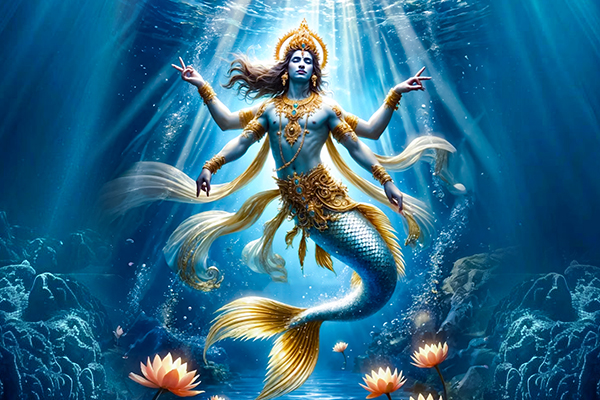
The first avatar, Matsya, appeared during Satya Yug, takes the form of a fish and emerges at the dawn of life, during a time of catastrophic floods. In the legend, Bhagwan Vishnu appears before King Manu and warns him of an impending deluge. He instructs Manu to build an ark and load it with seeds of life, sacred texts, and sages. Matsya then tows the ark to safety. From a scientific standpoint, this avatar reflects the origin of life in water. Matsya embodies the primal aquatic organisms from which all other life forms eventually emerged, symbolizing rebirth and the continuity of life after dissolution.
Significance: Preservation of life and wisdom at a time of dissolution.
2. Kurma – The Tortoise Avatar
Kurma, the tortoise avatar, appeared in Satya Yug, to support the mountain Mandara during the churning of the Milky Ocean (Samudra Manthan) by Devas and Asuras. As the churning rod began to sink, Vishnu took the form of a giant tortoise to support it on His back. This not only enabled the emergence of divine treasures like Amrit but also signifies a pivotal evolutionary phase—the transition from aquatic to amphibian life. Like amphibians, the tortoise lives in both water and land, symbolizing the evolutionary milestone of vertebrates beginning to adapt to terrestrial ecosystems.
Significance: The support of the divine in achieving cosmic balance and accessing hidden divine treasures.
3. Varaha – The Boar Avatar

The third incarnation, Varaha (appeared in Satya Yug), the boar, is a strong terrestrial mammal who rescues Mother Earth (Bhudevi) from the cosmic ocean after being abducted by the demon Hiranyaksha. Diving deep into the cosmic waters, Varaha lifts the Earth on His tusks and defeats the demon. This avatar is a powerful symbol of terrestrial evolution—the dominance of mammals on land and the capacity of these species to restore ecological balance.
Significance: Divine intervention to restore natural order and protect the planet itself from destructive forces.
4. Narasimha – The Man-Lion Avatar
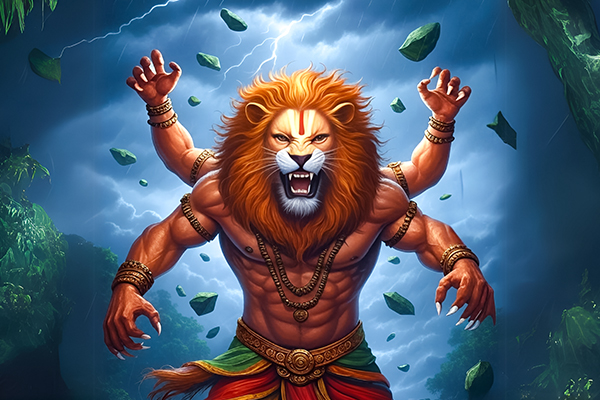
With Narasimha (appeared in Satya Yug), the half-man, half-lion form, we witness the symbolic representation of a species caught between animal instinct and human intelligence. Bhagwan Vishnu incarnates as Narasimha to slay the tyrant Hiranyakashipu, doing so in a way that defies the demon’s boon. This composite avatar represents a significant evolutionary leap—from purely animal to a being with the early markers of human consciousness. It embodies the hybrid state of primal force balanced with an emerging sense of self-awareness and moral judgment.
Significance: Divine justice transcends material limitations, ensuring that Vishnu always protects those who remain devoted with unwavering faith.
5. Vamana – The Dwarf Avatar
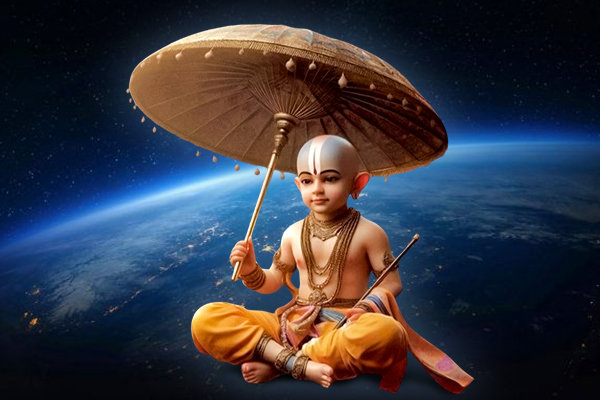
The next avatar, Vamana (appeared in Treta Yug), is a dwarf Brahmin who humbles the powerful demon king Mahabali through divine wit and cosmic transformation. Though diminutive in form, Vamana grows to cosmic proportions to reclaim the universe in three steps. This form symbolizes early humanoids—physically underdeveloped but intellectually advanced. Vamana represents the evolution of intellect and spiritual aspiration in early humans, showing that wisdom is not dependent on physical strength but on inner clarity and purpose.
Significance: Divine greatness veiled in humility, representing the victory of surrender over ego and arrogance.
6. Parashurama – The Warrior Sage
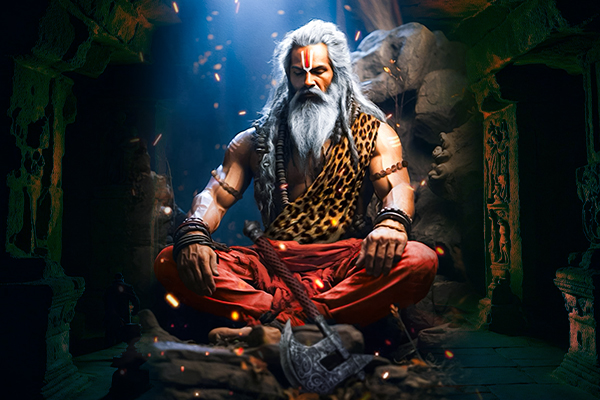
Parashurama (Treta Yug Avatar), the axe-wielding warrior-sage, ushers in the age of forest-dwelling tribal societies. Born as a Brahmin with the temperament of a warrior, He annihilates the corrupt Kshatriya class twenty-one times. He symbolizes the rise of the tool-using human, where survival and dominance were achieved through rudimentary weapons and early forms of societal structure. Parashurama reflects the turbulent phase of human history marked by conflict, retribution, and the enforcement of justice.
Significance: The continuing relevance of divine discipline in a decaying world.
7. Rama – The Prince of Ayodhya
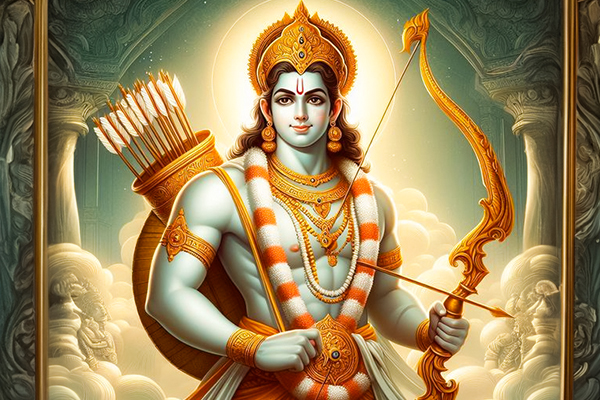
Rama (Treta Yug Avatar), the prince of Ayodhya, exemplifies the ideal man and king. His story, chronicled in the Ramayana, emphasizes the values of righteousness, moral integrity, devotion, and responsibility. Rama represents the maturity of civilization where monarchy, law, and structured societies were governed by ethical principles. His rule, often referred to as “Rama Rajya,” illustrates a vision of feudal order rooted in dharma, showing a civilized phase of human evolution based on collective good and divine governance.
Significance: The righteous conduct, adherence to truth, respect for elders, loyalty, and justice, even when faced with immense personal hardship.
8. Krishna – The Divine Statesman
Krishna (Dwapar Yug Avatar), the divine strategist and philosopher, marks a more complex and nuanced phase of social evolution. He is a charioteer, diplomat, lover, warrior, and guide—all in one. His teachings in the Bhagavad Gita reflect the challenges of balancing personal duty with cosmic truth, and His life mirrors a society in which diplomacy, politics, and spiritual depth coexisted. Krishna’s avatar reflects a civilization at its intellectual and philosophical zenith, dealing with inner conflict, societal intrigue, and divine play.
Significance: Love, diplomacy, leadership, and divine play (Leela) showcasing the joyous and enlightened facets of the Divine.
9. Buddha or Balram– The Enlightened One
In the ninth avatar, Buddha (Kali Yug Avatar), we see a marked turn inward. Departing from the ritualistic and external forms of spirituality, Buddha taught non-violence, mindfulness, compassion, and the middle path. His incarnation represents a phase in human consciousness where spiritual evolution began to prioritize introspection, non-materialism, and ethical living. He embodies humanity’s quest for enlightenment, transcending external structure in favor of inner realization. In some traditions, Balarama, Krishna’s elder brother, is considered the eighth avatar of Vishnu and an incarnation of Shesh. In some Odia texts, Bhagwan Jagannatha is also seen as an avatar of Vishnu, replacing Buddha. Likewise, in Goa and Maharashtra, Bhagwan Vithoba holds this role in regional traditions.
Significance: Introspective spirituality, where renunciation and inner transformation take precedence over external rituals.
10. Kalki – The Future Redeemer
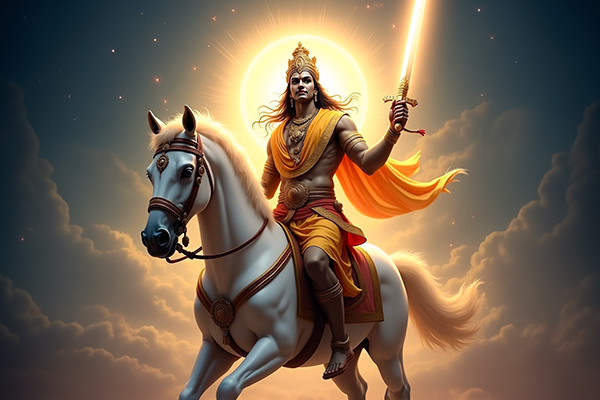
Lastly, Kalki, the prophesied future avatar, is yet to descend. He will appear at the end of Kali Yuga to cleanse the world of evil and restore cosmic order. Riding a white horse and wielding a blazing sword, He signifies a total reset of dharma. From an evolutionary lens, Kalki could represent a post-human form—one that emerges in an age of spiritual decay and technological excess. This avatar symbolizes the potential transformation of modern society, either through a spiritual resurgence or a radical evolution of consciousness.
Significance: Divine renewal and cosmic reset, a symbol of hope that righteousness will ultimately triumph and a new era of purity will emerge from the ashes of chaos.
Dashvatar & Theory of Evolution
The ancient Hindu concept of Dashavatara, or the ten incarnations of Bhagwan Vishnu, offers not only a theological narrative of divine intervention across cosmic ages but also, when viewed through a symbolic and philosophical lens, presents a striking parallel to the modern scientific understanding of evolution. Rather than treating these incarnations as isolated mythic episodes, one may interpret the sequence as an allegorical representation of the gradual evolution of life on Earth, progressing from primitive aquatic organisms to complex human societies and beyond. The first avatar, Matsya, emerging as a fish from the vast cosmic waters, aligns seamlessly with the idea that life began in the oceans. This is followed by Kurma, the amphibious tortoise, suggesting the biological transition from water to land. As evolution advanced, life took on fully terrestrial forms, symbolized by the boar Varaha, representing strong, land-dwelling mammals. The fourth incarnation, Narasimha—half-man, half-lion—captures a pivotal evolutionary moment, depicting a hybrid phase between animalistic instinct and emerging human cognition.
What is particularly profound is how the Dashavatara narrative shifts from biological to socio-cultural evolution. Vamana, the dwarf Brahmin, reflects early human ancestors—small in stature yet marked by the burgeoning of intellect and consciousness. The emergence of tool-based survival, tribal warfare, and forest-dwelling societies finds expression in Parashurama, the axe-wielding sage-warrior. With Rama, the ideal monarch, humanity evolves into organized civilization governed by law, ethics, and a sense of righteous duty. Krishna further embodies the sophistication of human consciousness, navigating moral complexity, political intrigue, and spiritual philosophy, marking an era of high civilization and reflective thought. The ninth avatar, Buddha, signifies a radical inner evolution—a turning point where humanity begins to question materialism, renounce violence, and seek higher consciousness through compassion and mindfulness. Finally, Kalki, the avatar yet to come, is often interpreted as a figure who will initiate a spiritual and societal reset. From an evolutionary lens, Kalki may represent the post-human ideal or a transformative force that addresses the moral and existential crises of a hyper-technological, spiritually disoriented age.
Therefore, the Dashavatara offers a visionary sequence that reflects the evolution of life from simple aquatic organisms to the potential for enlightened humanity, encompassing both biological growth and the development of consciousness and society. It is a deeply integrative narrative that unites mythology, spirituality, and science into a coherent arc of existence—an ancient allegory that foresaw, in poetic form, the fundamental stages of natural and civilizational evolution long before Darwin penned his theories.
Dashavatar Mantras
Om Matsya Rupay Namah
Om Koorm Rupay Namah
Om Varahaye Namah
Om Namo Narasimhaye
Om Vamana Rupay Namah
Om Parashuramaay Namah
Om Gautam buddhaay Namah
Om Ram Ramaya Namah
Om Kleem Krishnaay Namah
Om Kong Kalki Devay Namah
Jyotish or Planetary Interpretation of Dashavatar
“From the Sun God the Incarnation of Rama, from the Moon that of Krishna, from Mars that of Narasimha, from Mercury that of Buddha, from Jupiter that of Vamana, from Venus that of Parasurama, from Saturn that of Koorma (Tortoise), from Rahu that of Varaha [Boar] and from Ketu that of Matsya occurred. All other incarnations that these are through the Grahas. The beings with more Paramatmamsa [i.e. Rama, Krishna, Narasimha and Varaha] are called divine beings”
Brihat Parasara Hora Sastra, Translated by R. Santhanam (1984), Chapter 2, Verses 5-7
The Dashavatara, when interpreted through the lens of Jyotish (Vedic astrology), can offer a unique understanding of planetary influences and the cosmic cycles of creation, preservation, and destruction. Each of Bhagwan Vishnu’s ten avatars reflects a specific phase of human evolution and cosmic order, which correlates to the energies and principles embodied by the celestial bodies in astrology.
Here’s a comprehensive look at the planetary interpretation of the Dashavatara:
Sun (Surya Graha) - Rama Avatar
Rama, the ideal king, symbolizes virtue, duty, and leadership. The Sun, which represents authority, power, and righteousness, aligns with Rama’s role as the epitome of dharma and moral conduct. Just as the Sun shines with unwavering clarity, Rama's life showcases strength, honor, and truth, guiding humanity through challenges with righteousness.
Moon (Chandra Graha) - Krishna Avatar
_-_Krishna_Avatar.jpg)
Krishna embodies love, wisdom, and diplomacy. The Moon governs emotions, intuition, and nurturing qualities, all of which resonate with Krishna’s deep understanding of human nature. His teachings in the Bhagavad Gita, as well as his compassionate and playful nature, reflect the Moon’s influence on emotional intelligence, care, and connection to others.
Mars (Mangal Graha) - Narasimha Avatar
_-_Narasimha_Avatar.jpg)
Narasimha, the half-man, half-lion form of Vishnu, symbolizes strength, courage, and divine protection. Mars, associated with action, energy, and aggression, aligns with Narasimha’s fierce intervention to destroy evil. Just as Mars governs warrior-like qualities, Narasimha demonstrates the power to overcome immense obstacles and protect the righteous, even at great personal cost.
Mercury (Budh Graha) - Buddha Avatar
_-_Buddha_Avatar.jpg)
Buddha represents spiritual enlightenment, renunciation, and wisdom. Mercury governs intellect, communication, and reflection, which perfectly aligns with Buddha's emphasis on mindfulness, inner peace, and the pursuit of knowledge. His teachings inspire the development of higher consciousness and intellectual clarity, aiding humanity in its spiritual evolution.
Jupiter (Guru) - Vaman Avatar
_-_Vaman_Avatar.jpg)
Vaamana, the dwarf, symbolizes humility, intellectual awakening, and the subjugation of ego. Jupiter, the planet of expansion, wisdom, and higher learning, corresponds to Vaamana’s small form that expands to encompass all three worlds. This demonstrates Jupiter’s transformative power, guiding individuals toward greater spiritual and intellectual awareness through humility.
Venus (Shukra Graha) - Parashurama Avatar
Parashurama embodies the destruction of corruption and the establishment of divine justice, with the scales of balance, the symbol of Libra (Tula Rashi), representing the impartiality and equilibrium of this righteous judgment. Venus rules Libra and governs material prosperity, beauty, and harmony but also reflects the desire for balanced power. Parashurama’s role in ridding the world of corrupt rulers aligns with Venus’s role in balancing the forces of materialism and morality, guiding humanity toward a more just and disciplined world.
Saturn (Shani Graha) - Kurma (Tortoise) Avatar
_-_Kurma_(Tortoise)_Avatar.jpg)
Kurma, the tortoise, represents balance, endurance, and cosmic stability. Saturn, the planet of patience, structure, and discipline, mirrors Kurma’s role in providing the foundational support for the churning of the ocean. Saturn’s influence embodies the endurance needed to maintain cosmic order and stability during times of transformation and change.
Rahu - Varaha (Boar) Avatar
_Avatar.jpg)
Varaha, the boar, symbolizes strength, courage, and the restoration of the Earth. Rahu, known for its disruptive influence and challenges, represents the powerful forces needed to face dark times. Varaha’s intervention to rescue the Earth from the demon Hiranyaksha mirrors Rahu’s transformative power, helping to restore order and balance in chaotic situations.
Ketu - Matsya (Fish) Avatar
_Avatar.jpg)
Matsya, the fish, represents the preservation of life and knowledge during cosmic dissolution. Ketu, associated with spiritual liberation, detachment, and the search for higher truth, aligns with Matsya’s role in guiding humanity through the flood and preserving sacred knowledge. Just as Ketu encourages detachment from material life, Matsya’s form highlights the eternal preservation of spiritual wisdom during cosmic transitions.
Pluto – Kalki Avatar

Kalki, the prophesied future avatar of Vishnu, symbolizes the end of the current age and the restoration of righteousness. Pluto, the planet of transformation, destruction, and rebirth, is connected to Kalki’s role in ending corruption and ushering in a new era of purity and truth. Just as Pluto governs endings and new beginnings, Kalki’s arrival will bring about a radical transformation, resetting the world and restoring balance to the universe.
Conclusion: The Eternal Cycle of Dharma
The Dashavatara encapsulates the cyclical nature of time, portraying the ongoing battle between dharma (righteousness) and adharma (unrighteousness), which governs the ebb and flow of the universe. Each avatar of Bhagwan Vishnu represents a divine intervention tailored to the specific moral and spiritual crises of the time. These incarnations are far more than mythological tales; they serve as timeless spiritual blueprints, offering profound guidance for individuals seeking to live a life in harmony with cosmic order and truth. Through each avatar, Bhagwan Vishnu manifests His unwavering commitment to restoring balance, upholding justice, and guiding humanity toward enlightenment, no matter how dire the circumstances of the age. As each age unfolds, the avatars continue to reveal the path of righteousness, teaching humanity how to transcend ignorance, overcome adversity, and return to the eternal principles of dharma. Thus, the Dashavatara is not only a reflection of the divine’s cyclical role in preserving the cosmos but also a powerful reminder of the constant divine presence that sustains the world’s moral and spiritual evolution throughout the ages.
Dashavatar Related Products
Dashavatar Maha Puja and Yajna
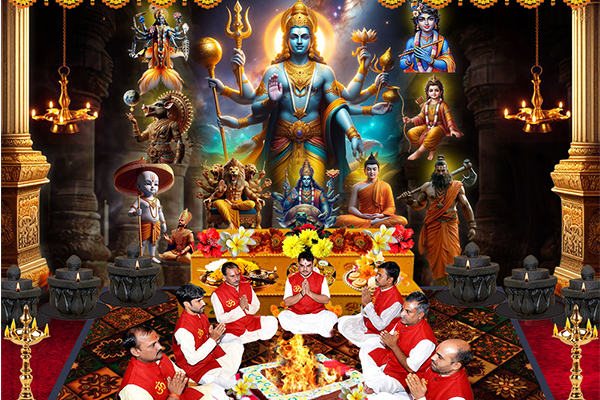
A powerful puja and yajna dedicated to the 10 avatars of Bhagwan Vishnu. This spiritual practice helps in invoking the blessings of Bhagwan Vishnu, ensuring protection, prosperity, and spiritual growth.
Dashavatar Shaligram Murti
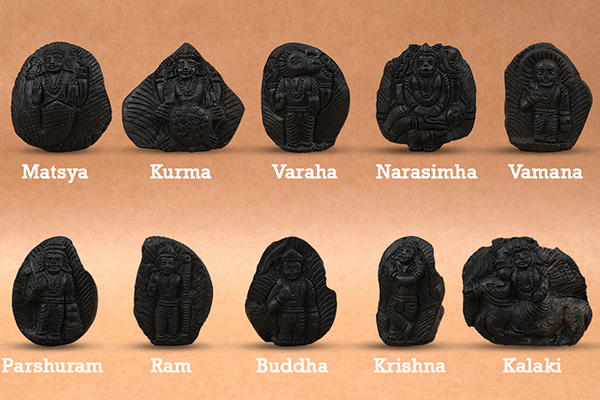
Buy Dashavatar Shaligram Murti
This set features beautifully crafted Shaligram idols representing the ten avatars of Bhagwan Vishnu. Each idol in this set serves as a powerful tool for spiritual healing and devotion.
Brass Dashavatar Idol with Shaligram
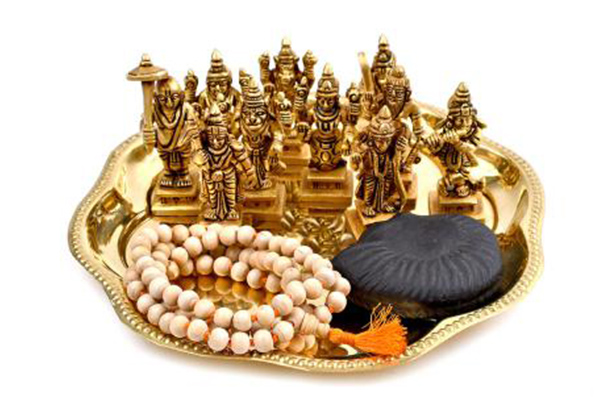
Buy Brass Dashavatar Idol with Shaligram
A single idol set that includes the ten avatars of Vishnu along with a Shaligram stone. This combination offers a complete spiritual experience for devotees, enhancing worship and meditation practices.
10 Mukhi Rudraksha

The 10 Mukhi Rudraksha represents Bhagwan Vishnu and is also associated with his eight incarnation, Bhagwan Krishna. This bead helps in overcoming obstacles, promoting mental peace, and protecting the wearer from negative energies.
Dashavatar Shaligram Shila Set of 10
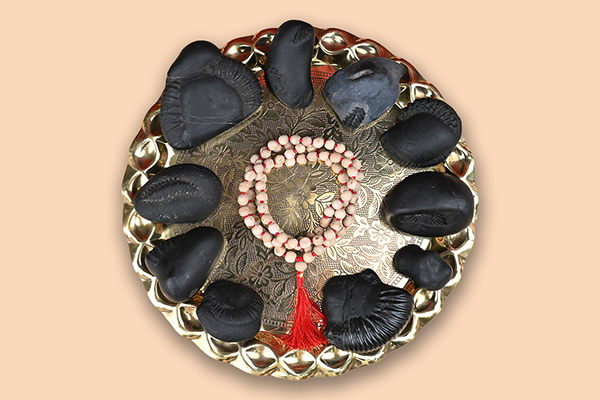
Buy Dashavatar Shaligram Shila Set of 10
This set includes 10 Shaligrams, each representing one of the Dashavatars of Vishnu. The Shaligrams serve as divine symbols of Bhagwan Vishnu, aiding in spiritual growth and purification.

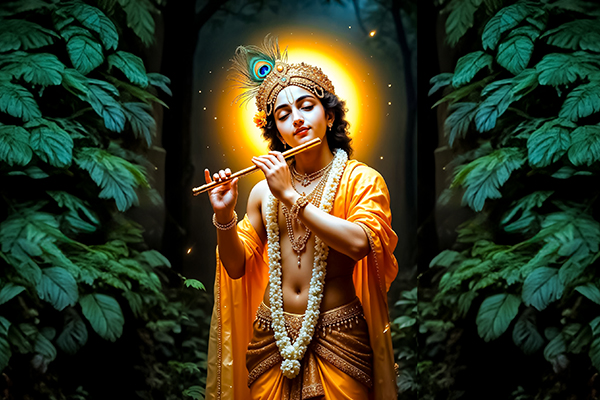
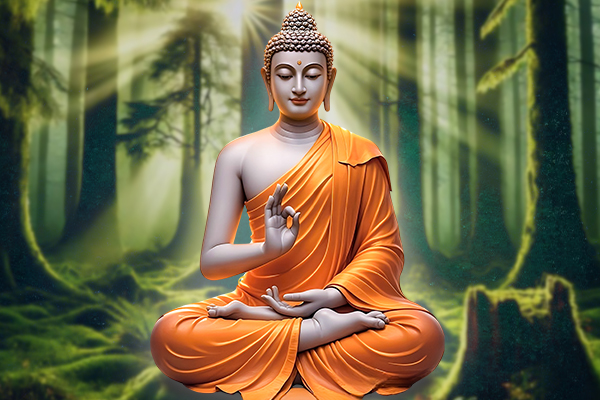

-in-Astrology.jpg)
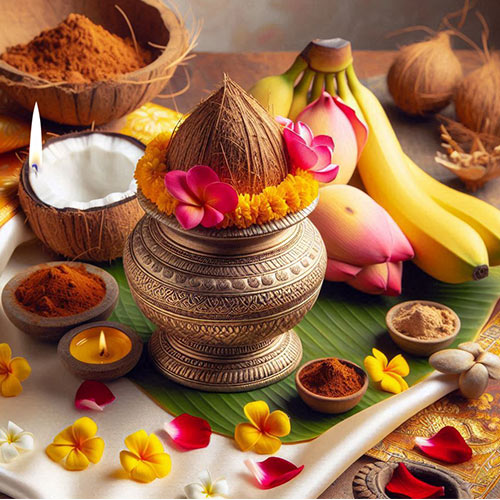
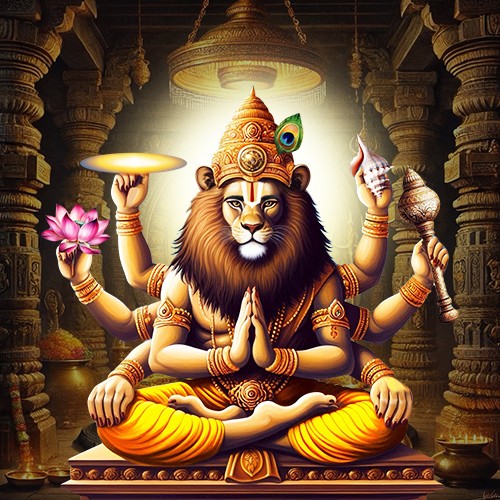
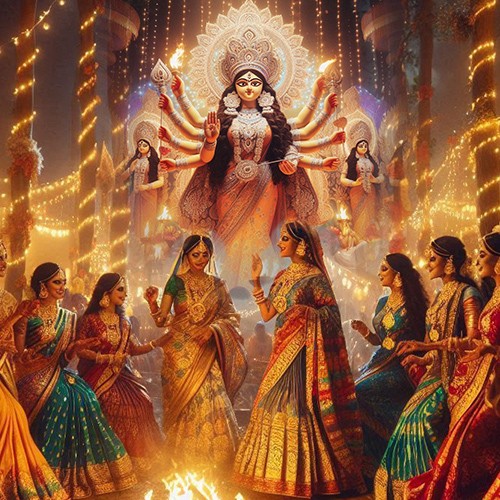
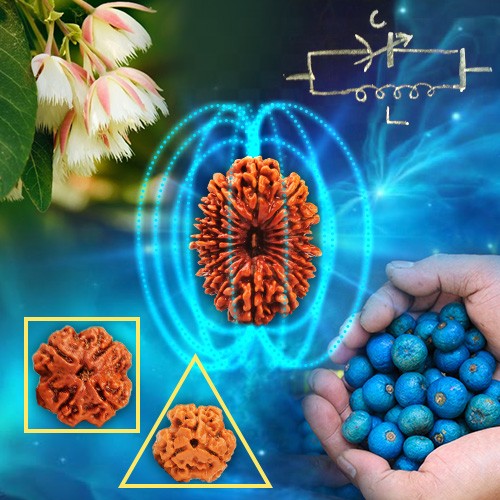

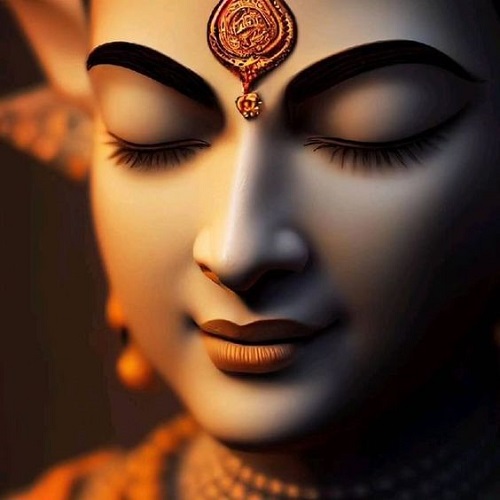
.jpg)
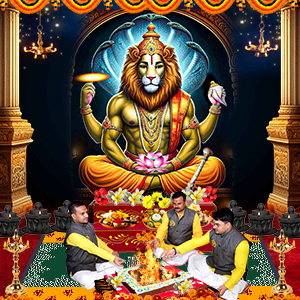
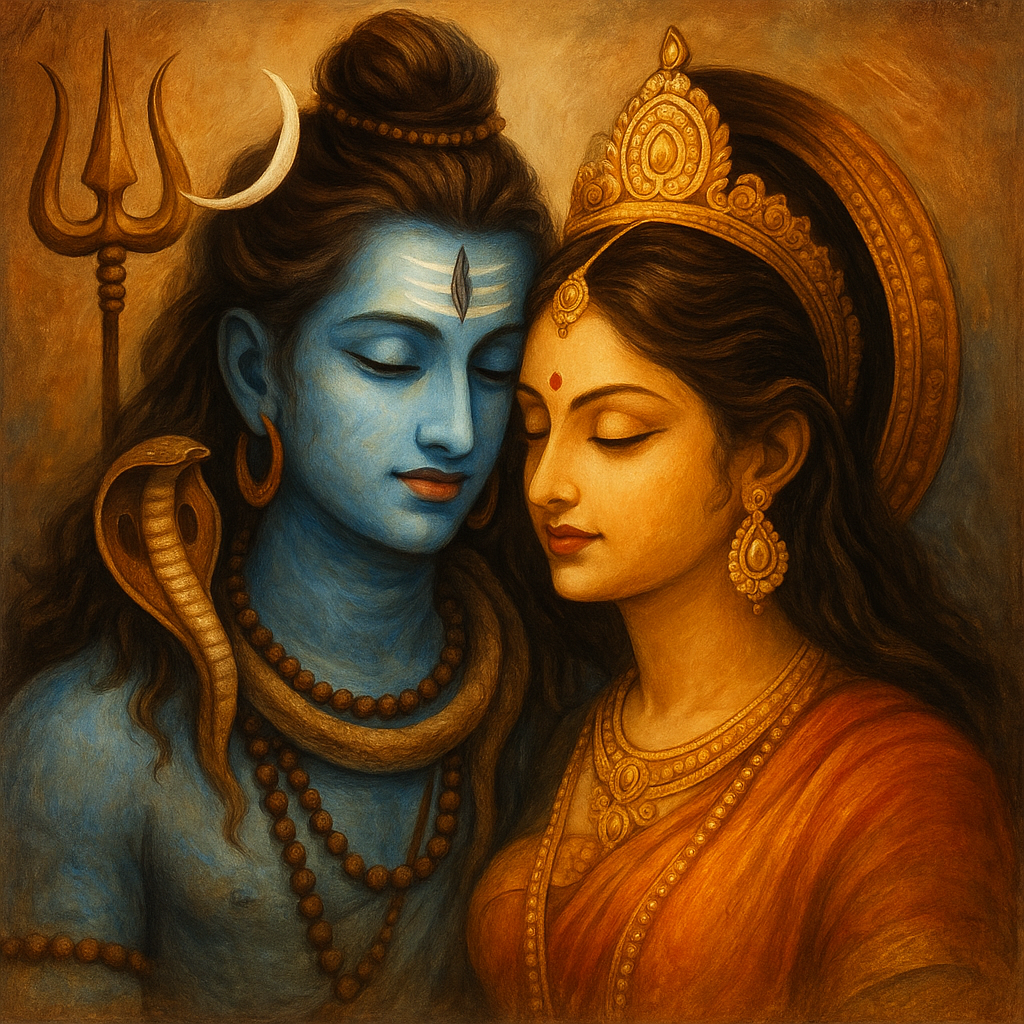
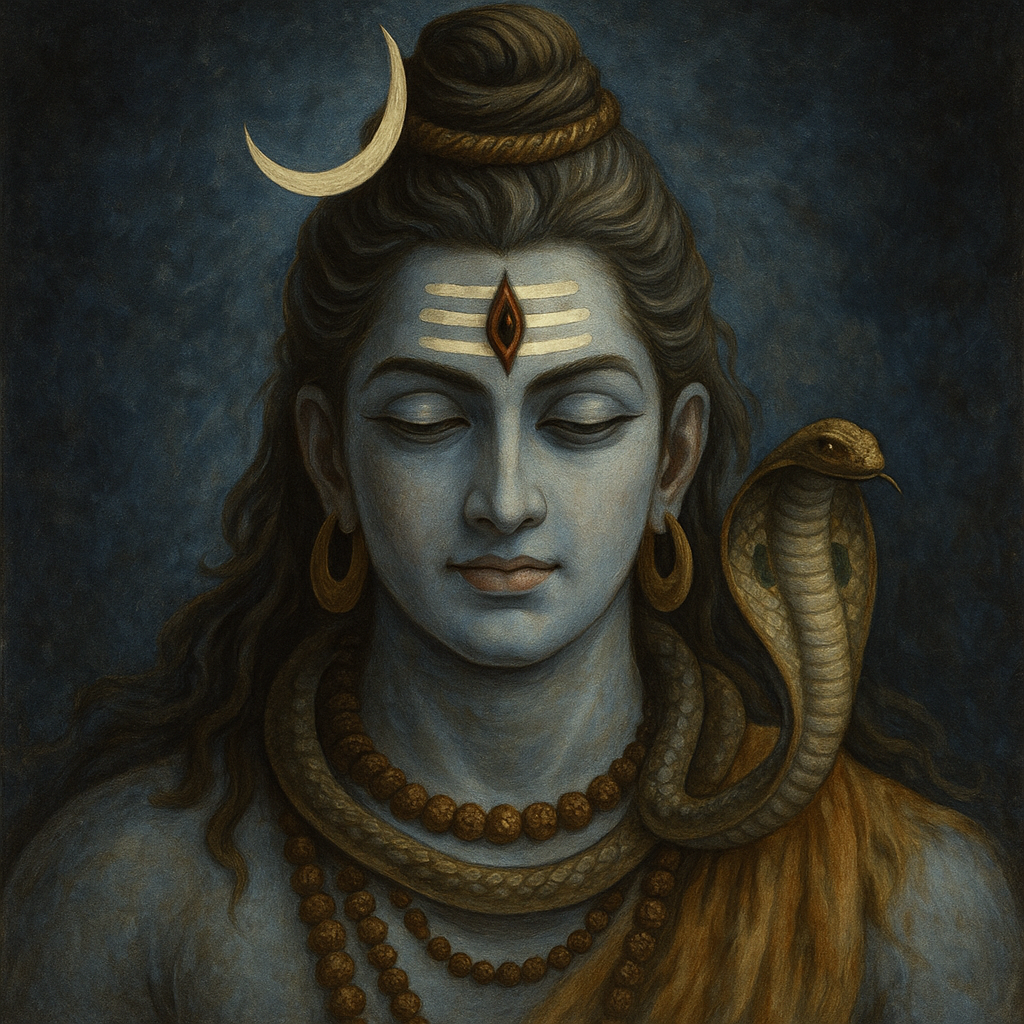
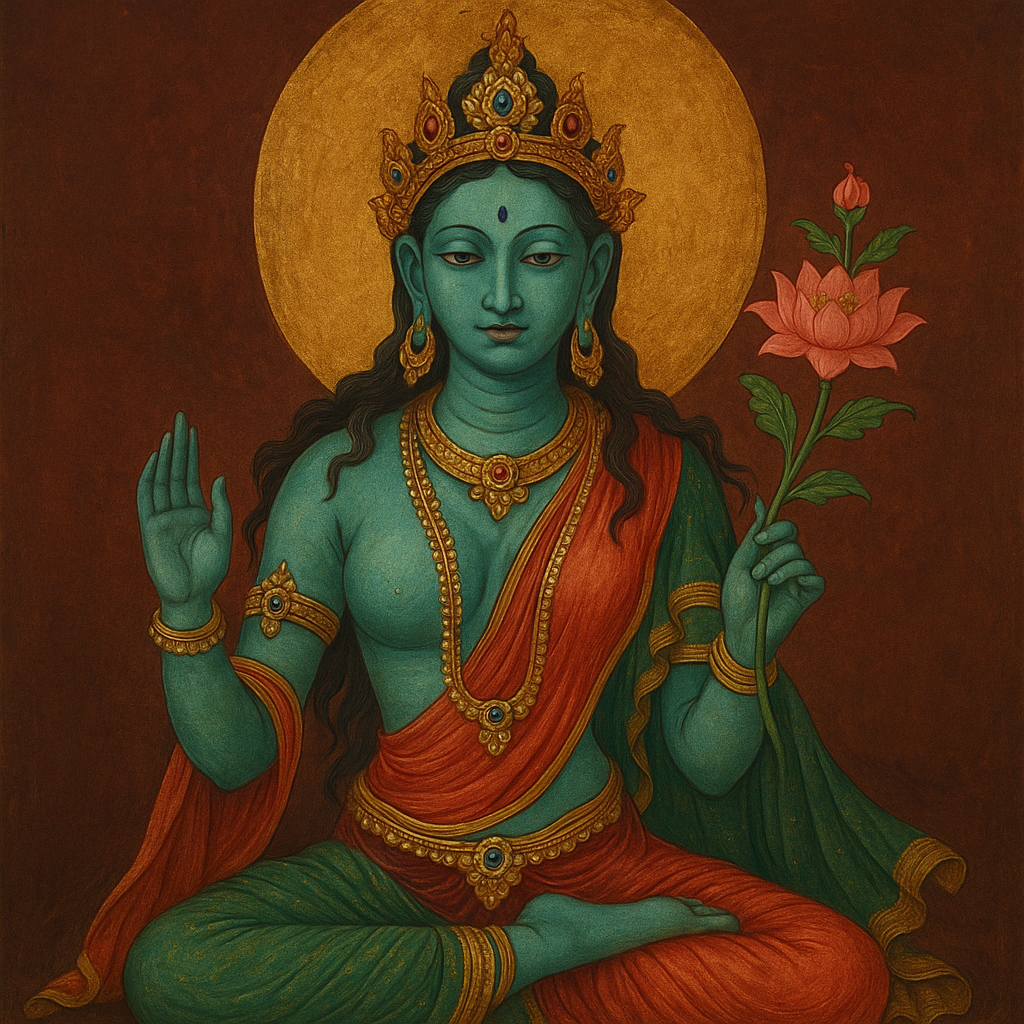
Comments 0
Leave your thought here